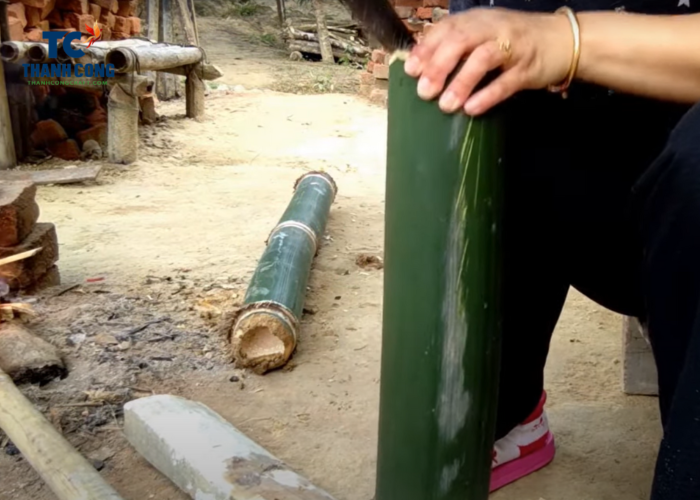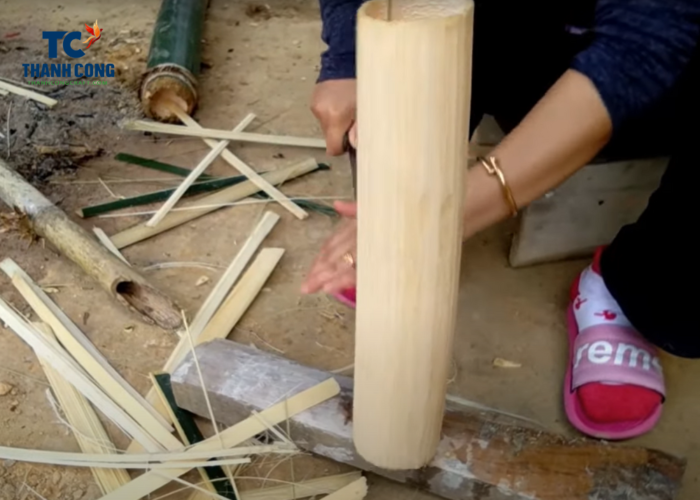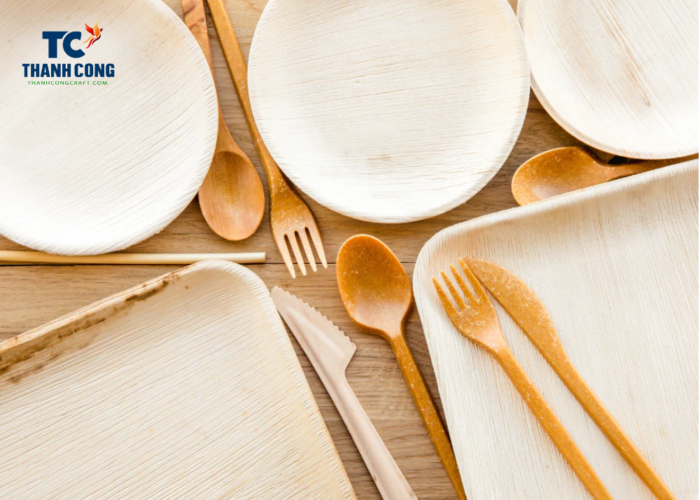Embarking on an eco-friendly journey, bamboo dishes stand out as a sustainable, robust, and aesthetically pleasing choice. In this article, we’ll show you how are bamboo plates made and how to make bamboo plates on your own. So, let’s dive into the fascinating process and explore the art of crafting your own environmentally conscious bamboo dishes!
Contents [hide]
1. How to make bamboo plates?
Creating your own bamboo plates is a rewarding and environmentally conscious endeavor. Bamboo, known for its sustainability and durability, makes for an excellent material for crafting plates. In this step-by-step guide, we will walk you through the process of bamboo plates from the manufacturing process scratch.
Materials Needed:
- Fresh Bamboo Stalks: Select fresh bamboo stalks for a pliable and workable base.
- Saw: Choose a saw suitable for cutting bamboo. A fine-toothed saw is recommended for precision.
- Sandpaper: Different grits for smoothing edges and surfaces.
- Wood Glue: High-quality wood glue for joining bamboo pieces securely.
- Clamps: Ensure a tight bond while the glue dries.
- Wood Finish (Optional): To enhance the appearance and protect the bamboo.
Making Bamboo Plates Step-by-Step Guide:
Step 1:
To make plates from bamboo, choose bamboo stalks that are mature but not too old. Bamboo tree with a suitable diameter, about 10-15 cm, and cut it into short sections of about 20 cm. Take care to make clean, straight cuts.

Step 2:
Use a bamboo peeler to peel off the bark and outer layer of the bamboo, leaving a clean and smooth wood layer.

Step 3:
Use a saw to cut the bamboo sections into thin pieces, then use a grinder to smooth the bamboo pieces together.

Step 4:
Arrange the cut bamboo pieces into the desired plate shape. Apply wood glue to the edges and press them together. Use clamps to secure the pieces until the glue dries.

Step 5:
Once the glue has dried, use sandpaper to smooth the edges and shape the plate to your liking.
Step 6:
Use paint or oil to coat the surface of the plate, creating a protective layer against moisture, mold and bacteria. Let it dry completely before using. Inspect the plate for any rough edges or imperfections. Make necessary adjustments.

2. FAQs
2.1 Are bamboo plates worth it?
Bamboo plates are undoubtedly worth considering for a multitude of reasons. Bamboo plates stand out as an eco-friendly and sustainable option for individuals aiming to minimize their waste output. These plates present several advantages over other dishware options:
- Swift Regeneration: Bamboo plates grow rapidly, are biodegradable, and undergo production without the use of harmful chemicals.
- Exceptional Durability: Bamboo plates boast high resilience, heat resistance, and are less susceptible to breakage compared to delicate porcelain or glass alternatives.
- Diverse Aesthetics: Available in a myriad of designs, colors, and sizes, bamboo plates cater to various styles and occasions.
- Affordability: Offering cost-effectiveness, bamboo plates are often more budget-friendly than their metal or plastic counterparts.
Hence, bamboo plates emerge as a compelling choice for those prioritizing environmental conservation and seeking economical solutions.
2.2 How long do bamboo plates last?
Generally, bamboo plates can last for up to 3 years if they are used occasionally and washed by hand. However, if they are used frequently and washed in a dishwasher, they may only last for a few months. Bamboo plates should be stored in a cool and dry place away from direct sunlight and moisture to prevent them from cracking or warping.
Bamboo plates, bamboo bowl are a type of biodegradable tableware that are made from bamboo fibers. They are a popular alternative to plastic or paper plates because they are eco friendly, durable and stylish. Bamboo plates can last for different periods of time depending on how they are used and stored.
2.3 What oil do you use on bamboo plates?
Bamboo plates are a great eco-friendly alternative to plastic or paper plates, but they require some special care to maintain their quality and durability. One of the most important steps is to oil them regularly with a suitable oil that can protect them from cracking, warping, or staining. Here are some tips on how to choose and apply the best oil for your bamboo plates.
The best oil for bamboo plates is one that is food-grade, natural, and plant-based. Some examples are coconut oil, mineral oil, walnut oil, or linseed oil. Avoid using vegetable oils that can go rancid, such as olive oil or sunflower oil. Also avoid oils that contain additives, fragrances, or chemicals that can harm your bamboo plates or your health.
Bamboo plates are a unique, economical and environmentally friendly product. You can make bamboo plates at home or buy them from Thanhcongcraft. We hope this article has provided you with useful information on how to make bamboo plates.
If you have any further questions, don’t hesitate to send thanhcongcraft an email us at info@thanhcongcraft.com or message us at WhatsApp: +84967485411. Hope to serve you soon! Best regard!


